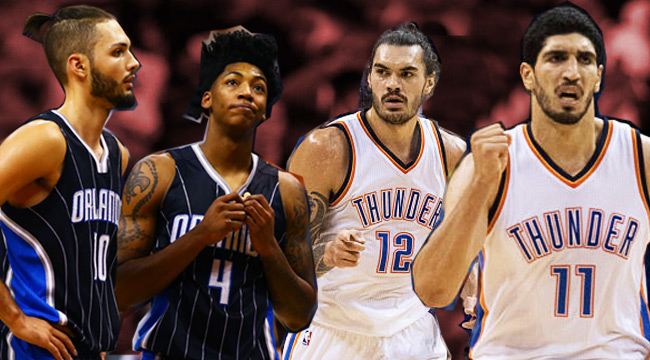
Constructing a contender isn’t anything close to a science. There’s no right or wrong way for an organization to build its substandard roster into one that has the chance to win a championship. Losing games, hoarding assets, and fishing for superstars at the top of the draft hasn’t always been the most popular way for a team to begin the inevitably arduous quest toward sustained legitimacy, and isn’t the only means to doing so now.
The Philadelphia 76ers remain the NBA’s most infamous up-and-comers, but the Utah Jazz might very well prove its most successful young team despite letting a pair of quality veteran big men walk in free agency and getting next to nothing from the high lottery pick that was supposed to help Gordon Hayward, Derrick Favors, and the rest take their longest evolutionary step. The Boston Celtics are zigging their own path to contention, while the Portland Trail Blazers fell backwards into a seemingly perennial playoff spot after losing four long-time starters last summer – including an All-NBA honoree in the thick of his prime.
Make no mistake: The model to which Philadelphia subscribed before ousting Process king Sam Hinkie is still the surest bet to landing a top-10 player, and as a result might be the surest bet to playing deep into spring. The 2004 Detroit Pistons stick out like a sore thumb among championship teams for a reason. On the other hand, it’s not like Larry Brown’s squad lacked top-tier individual talent, either.
Trophies tilt on a handful of players every season, a harsh reality the entire league is forced to embrace. But merely employing one of those luminaries isn’t enough; they must be surrounded by a quality supporting cast that both emphasizes their strengths and mitigates their weaknesses.
Needless to say, building a team into title contention is an arduous and intricate task that hinges on many factors outside the realm of control. Luck is a requirement instead of a luxury, and a single misfortune can derail promise gleaned from years of prudent decision-making.
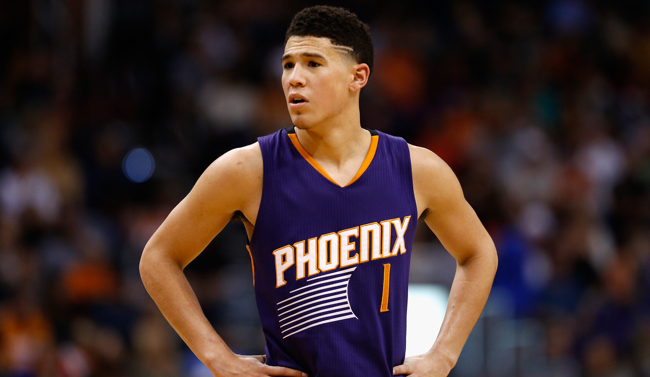
The long-term prospects of a few select organizations makes it easy to believe otherwise. But don’t be fooled: There’s no blueprint here. A team that’s finally found hope can lose it almost entirely if a player lands awkwardly after taking contact in the air, or when the bounce of lottery balls keeps it from choosing in the top-two picks of a draft that only contains a pair of franchise-changing prospects.
Bottom line: There’s no foolproof method to rebuilding madness – just chance and a franchise maximizing the opportunities to capitalize on it.
Some have done so better than others. After studying every team in the NBA to help identify those that have, though, it became clear that a majority of the league’s teams possess a sense of upward mobility. Most franchises aren’t playing to win a championship in 2016-17, but somewhere down the line when presumptive young cornerstones reach their playing prime and either live up to or fail to meet wide-eyed expectations.
This exercise was originally slated to include only 10 teams, the ones that are likeliest to beat long odds and emerge as legitimate contenders going forward despite their youth and current standing. But re-building is fluid. Only taking the cream of the crop into account could allow kismet to play too big a hand when assessing the NBA even a year from now, let alone at the turn of the decade.
Using specific parameters on which teams to profile ensured that the entire league wouldn’t be included, and also ensured less-notable cases wouldn’t be negligently overlooked. Here’s the rubric:
- Only players aged 24 or younger before the 2016-17 season begins were counted
- Teams containing four or more of those players made the first cut
- If fewer than four of those guys were deemed less than “likely rotation players” at their reasonable playing peak, their team was eliminated from consideration
After way too much time spent poring over all 30 rosters, we were left with 17 qualified teams and subsequently ranked them in the order from least-to-most likely to succeed. But team building and a player’s potential, as should be abundantly clear by now, is complicated. The strengths and weaknesses of these groups of youngsters deserve much more analysis than a passing glance – hence this operation being broken into two parts.
Without further ado, here’s Part I of the league’s best and worst young cores.
Part II, featuring eight teams poised for years of contention, will be published on Tuesday.
17. Sacramento Kings
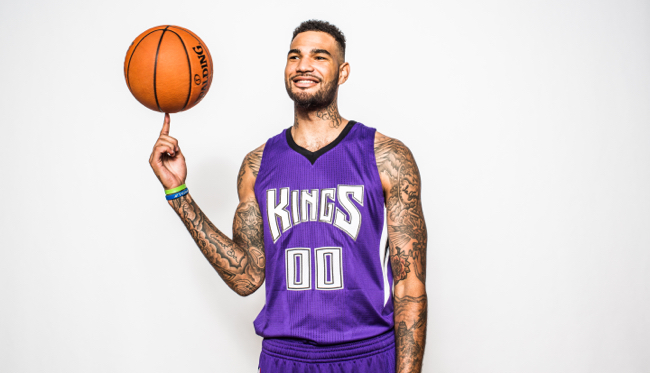
Core: Ben McLemore (age: 23), Willie Cauley-Stein (22), Skal Labissiere (20), Malachi Richardson (20), Georgios Papagiannis (19)
McLemore might be the single most disappointing young player here. After three years in the league, there’s still no clear indication as to what type of player he’ll eventually become – let alone what he does consistently well on the court right now. It would be interesting to see what a player so obviously gifted could do playing for a more stable organization. Then again, maybe that’s what the Kings will become under Dave Joerger. Only time will tell.
Cauley-Stein showed flashes of the defensive and rim-rolling potential that made him a lottery pick in 2015-16, but doubt was cast on his future with the Kings after they shocked the basketball world by making Papagiannis, a 7-foot-1 Grecian known for his surprising overall coordination, the 13th pick in June’s draft. Sacramento drafted another high-risk, high-reward center in Labissiere at the end of the first round. Related: DeMarcus Cousins is definitely best utilized alongside a power forward.
The Kings have some green talent, to be sure, but that talent still lacks clear sense of direction – in terms of both on-court development and positional redundancies. Big surprise.
16. Toronto Raptors
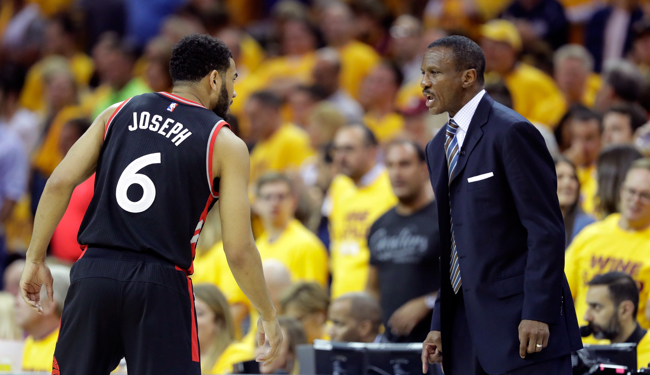
Core: Corey Joseph (24), Jared Sullinger (24), Norman Powell (23), Bruno Caboclo (20), Jakob Poeltl (20)
Masai Ujiri deserved Executive of the Year last season for poaching Joseph from the San Antonio Spurs and finding a player of Powell’s caliber in the second round of the draft. The latter, in particular, gives Toronto some flexibility if it ultimately decides Terrence Ross isn’t worth the headache. Powell is the rare drafted college senior who has room to grow.
Nobody knows what Caboclo could be two years after being deemed “two years away from two years away,” but there’s still intrigue here. An athletic forward with a 7-foot-6 wingspan who has the chance to emerge as a reliable threat from deep – Caboclo shot 33.5 percent on nearly seven, three-point attempts per game in the D-League last year – is definitely worth the time and effort of a developmental coaching staff.
Sullinger will probably be in Toronto for the coming season only. His contract is an absolute bargain, and the Raptors don’t have the personnel to play another plodding big man major minutes – and won’t need to once Poeltl is ready to shoulder a bigger load.
Kyle Lowry, DeMar DeRozan, and Jonas Valanciunas are this team’s stars, of course, but Joseph, Powell, and Poeltl will also loom large in Toronto’s future. If Caboclo becomes a viable rotation cog, the Raptors will have a solid group of role players – at the very least – to round out an extremely well-rounded roster, one that should compete in the Eastern Conference for years to come.
15. Charlotte Hornets
Core: Frank Kaminsky (23), Jeremy Lamb (24), Cody Zeller (23), Michael Kidd-Gilchrist (22)
There’s nothing wrong with guys who occupy a specific set of duties within the team concept. They’re a necessary part of any successful team, and can even prove the difference between a hoisting the Larry O’Brien Trophy and coming away empty-handed.
But Charlotte, unfortunately, only possesses young players who fit that bill. If Kaminsky lived up to his reputation as a floor-stretching bucket-getter and Zeller continued diversifying his offensive game, just how good would they really be? Lamb isn’t a star let alone a bench player on whom Steve Clifford can count, and Kidd-Gilchrist, bless him, just can’t stay on the damn floor.
If the Hornets possessed a foundational cornerstone worthy of perennial All-NBA consideration, it would be easier to see the long-term merit of this largely-anonymous group. But they don’t, obviously, leaving the increasingly long-shot prospects of Kidd-Gilchrist popping as this team’s best chance to take another step toward legitimate contention. Still, Charlotte could do worse than guys like Kidd-Gilchrist, Zeller, and Kaminsky; they all figure to have decade-long careers at bare minimum.
14. Washington Wizards
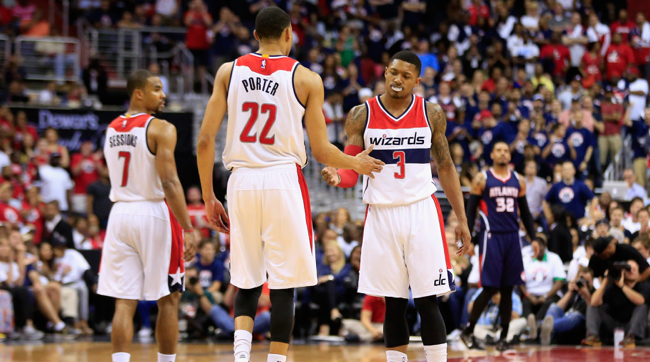
Core: Tomas Satoransky (24), Bradley Beal (23), Trey Burke (23), Otto Porter (23), Kelly Oubre (20)
Beal is probably the fourth-best player on this list. He’s already proven an elite shooter from both standstill and off the bounce, and has the natural sense of comfort and pace as a playmaker to become an effective secondary ball handler beside John Wall. He’s a willing and engaged defender, too. The only thing keeping him from true stardom is health. Unfortunately for the Wizards, Beal has already suggested a career-long minutes restriction might be in order to best preserve his body. Yikes.
Porter might be the player who most decides the Wizards’ ceiling this season. He quietly enjoyed a solid overall campaign in 2015-16, most impressively bumping his three-point accuracy up to 36.7 percent despite taking 2.2 more tries from range than he did the previous year. Impressive stuff. Does he have the rebounding instincts and strength to masquerade as a small-ball power forward for extended stretches? Probably not, and Porter obviously won’t ever be go-to scorer, either. But rangy wings who knock down open shots, make hay in transition, and defend multiple positions can still be a vital cog for a contending team.
If Wall and Beal are Washington’s stars and Porter its super role player, Oubre is the team’s true enigma, a player who’s just as likely to be riding the bench elsewhere five years from now as starring in the nation’s capital. The 6-foot-7 wing just didn’t show enough innate awareness or advanced skill in his rookie season to make anyone confidently believe he’d take full advantage of his awesome physical gifts at any point down the road. It’s still very early for Oubre, but he needs to make serious strides in 2016-17 to be considered a fixture of the Wizards’ future.
Satoransky has the profile of a prototype reserve guard in the modern NBA: He can create offense, spot up for open jumpers, and has the length and athleticism to check all three positions on the perimeter. Wall, especially, stands to benefit from the presence of another natural passer, and it will be interesting to see how often Scott Brooks pairs Satoransky with Washington’s incumbent backcourt stars. If that’s a triumvirate that proves tenable defensively, and Porter takes a mini leap, the Wizards could be this season what so many thought they might be last season – and will have that chance for many years going forward.
13. Boston Celtics
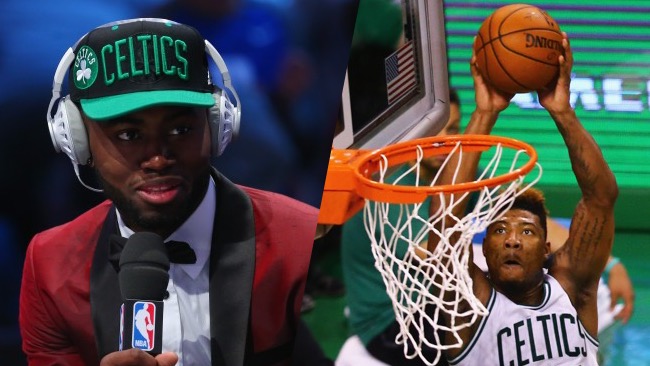
Core: R.J. Hunter (22), Jordan Mickey (22), Terry Rozier (22), Marcus Smart (22), Jaylen Brown (19)
Boston struck gold with Isaiah Thomas and excised years of free agency demons by signing Al Horford. Jae Crowder could be their most valuable player in 2016-17. The Celtics’ long-shot odds of dethroning the Cleveland Cavaliers this season and beyond, though, will most come down to a player on this list becoming that elusive third star.
There’s a division among green-and-gold faithful and remaining league followers about the potential of Smart. But that debate isn’t as complicated as either side makes it seem; his ceiling mostly boils down to fixing a jumper that’s been even more busted over the past two seasons than pre-draft naysayers anticipated. Doing so wouldn’t only open up Boston’s offense on a team-wide level, but also allow Smart to exploit defenders who are forced to close out to the arc with aggressive dribble drives, an especially important corollary considering his immense struggles finishing at the rim. Among players who took at least 150 shots from the restricted area in 2015-16, only Emmanuel Mudiay shot a worse percentage than Smart’s 48.2.
Boston surprised many by making Brown the third overall pick back in June, but he fills a gaping hole on this roster as a big, explosive wing whose physicality stands to mitigate the ill-effects gleaned from Crowder’s time spent at power forward. Unlike most hyper-athletic wings with rough offensive edges, the UC-Berkeley product shows burgeoning prowess as a ball handler. That’s huge, and is the biggest reason why his selection made more sense than many believe. The next step for Brown is honing his jumper and adding some wiggle to his straight-line driving ability. Either way, the 19-year-old’s floor is high, and his ceiling is higher; it’ll just take awhile before we know which barrier a fully-evolved Brown will scrape.
This is a big year for Rozier coming off a stellar performance at Las Vegas Summer League. He’s redundant with Avery Bradley and Smart around if he can’t play point guard, but Rozier could still establish himself as a worthwhile piece for the Celtics – or a less guard-heavy team – by forcing his way into Brad Stevens’ rotation with relentless activity and improved three-point shooting. Hunter and Mickey, meanwhile, will likely fall victim to a numbers crunch after the Celtics added Horford and Brown this summer. Regardless, they’re certainly worth hanging on to.
12. Portland Trail Blazers
Core: Allen Crabbe (24), Meyers Leonard (24), C.J. McCollum (24), Maurice Harkless (23), Noah Vonleh (20)
There’s only so much room left for McCollum, a runaway winner of Most Improved Player last season, to grow. All four-year college players are at a natural disadvantage in that department, of course, and the same can be said for guys whose games rely on skill and tact more than size and athleticism. Still, McCollum proved himself a foundational piece for the Blazers last season, and is bound to make minor improvements the more experience he gets playing Robin to Damian Lillard’s Batman.
The problem for Portland is that he’s the only young player on this roster who has the chance to star.
Vonleh, despite a thick frame, long arms, and quick feet, just lacks the feel to make the type of all-encompassing impact his natural gifts suggest. Frequent pre-draft comparisons to Chris Bosh were never close to fair. The 21-year-old should focus on refining his jumper and furthering his defensive awareness before anything else. If Vonleh can eventually stretch the floor, contain pick-and-roll ball handlers, and offer a semblance of rim protection, he can still be ultra valuable.
The other players here are much closer to their relatively low peaks. Crabbe is a good shooter, game defender, and underrated passer, but won’t ever be much more than what he is at 24. Harkless, like Vonleh, seems destined to top out as a defender first and foremost. Leonard is a marksman as a 7-footer, yet clearly lacks the disposition and awareness to take full advantage of his unique abilities.
On the other hand, Crabbe, Harkless, and Leonard are already worthwhile rotation players, it would be disappointing if Vonleh didn’t become one at the very least, and McCollum could make multiple All-Star teams by the time his prime is over. There’s a lot of talent here, but it won’t be enough to push Portland over the top in the Western Conference – an extra big problem considering they’re capped-out after a summer spent retaining incumbents and overpaying Evan Turner.
11. Orlando Magic
Core: Bismack Biyombo (23), Evan Fournier (23), Elfrid Payton (22), Mario Hezonja (21), Aaron Gordon (20)
Orlando remains basketball’s biggest enigma. A glut of raw youngsters prevented the team from achieving its win-now edict last seeason and undoubtedly contributed to Scott Skiles’ abrupt resignation in May. Rob Hennigan addressed that issue by flipping Victor Oladipo and another lottery pick for Serge Ibaka on draft night, but created a new one by adding another big man to the mix days later with the signing of Biyombo.
The former Raptors center is worth $18 million per year, by the way. His salary isn’t the problem. It’s Biyombo’s fit with this roster that presents issues, and not just because his defensive value will be lessened by sharing the floor with Nikola Vucevic and chasing power forwards.
Gordon, as new coach Frank Vogel recently told ESPN’s Zach Lowe, will start at small forward for the Magic in 2016-17. He’s more equipped to play on the wing than most realize; the 20-year-old is a natural passer and burgeoning ball handler, while his jumper is merely underdeveloped as opposed to completely broken. But just because Gordon can play small forward doesn’t mean he should. Almost every ‘tweener who’s versatile enough to play inside and outside is better utilized at power forward in today’s NBA, and the same definitely goes for Gordon, whose otherworldly explosiveness can’t be contained by opposing big men. Lengthy wings can’t match the dunk contest runner-up in that department, either, but still have a much better chance at doing so – especially if Gordon’s in-progress jump shot allows them to go under ball screens and play an extra step off him on the weak side.
It’s extra problematic because Gordon is clearly this organization’s best shot at a superstar in the post-Dwight Howard era. Fournier is a sneaky brilliant offensive player, a playmaking guard who’s an efficient scorer from all over the floor, but he lacks the physical dynamism to be much more than an overqualified third wheel. Payton’s limitations are clear, and Hezonja – despite his prodigious raw gifts – didn’t show much in his rookie season that suggested he’d ever live up to his darling reputation among League Pass mavens.
The Magic still have an enviable collection of young talent, but complicated the evolution of their best prospect by bringing another big man into the fold. On ability alone, Orlando deserves a better place in these rankings. Shame.
10. Phoenix Suns
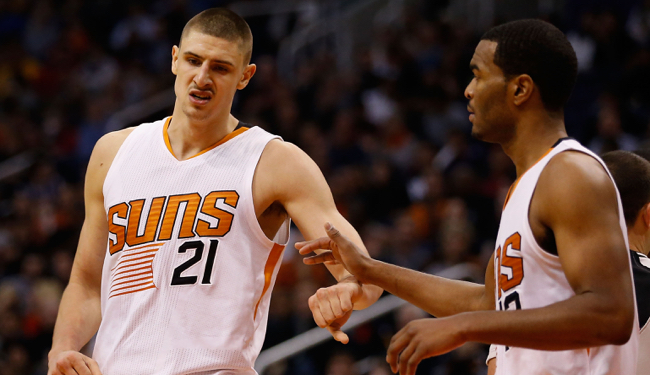
Core: Brandon Knight (24), Alex Len (23), T.J. Warren (22), Archie Goodwin (21), Devin Booker (19), Marquese Chriss (19), Dragan Bender (18)
Knight, Len, Warren, and Goodwin by themselves ensure that Phoenix applies for this exercise. Booker, Chriss, and Bender, though, are the guys who push their franchise into the top 10.
Optimism about the Suns begins with Booker, a 19-year-old shooting guard who burst onto the scene midway through his rookie season by flashing all-court offensive comfort that stands in stark contrast to his age. The former Kentucky product was a lottery pick because of his world-class shooting ability, but is poised for stardom because he’s already proven an effective ball-screen playmaker and advanced interior finisher. There just haven’t been many 6-foot-6 guards in recent history as far along as Booker is offensively at this stage of their careers.
Chriss and Bender represent the opposite end of the boom-or-bust spectrum. Neither rookie will play a big role for Phoenix in 2015-16, but still clearly possess the necessary blend of physical attributes and raw skill to emerge as impact players down the road. Bender’s trajectory as a sweet-shooting seven-footer who can make plays off the bounce seems particularly volatile; that he primarily played small forward in Summer League is evidence of that reality.
With solid early-20s veterans and extremely talented teenagers, the Suns boast basketball’s most well-rounded young core, but Booker can’t lift his team from the league cellar all by himself. If Chriss or Bender makes good on his potential and Len proves an above-average center, Phoenix will undoubtedly prove this ranking too low. But nearly as likely a scenario casts Booker as the stranded star on a team full of not-quite’s and could-have-been’s.
9. Oklahoma City Thunder
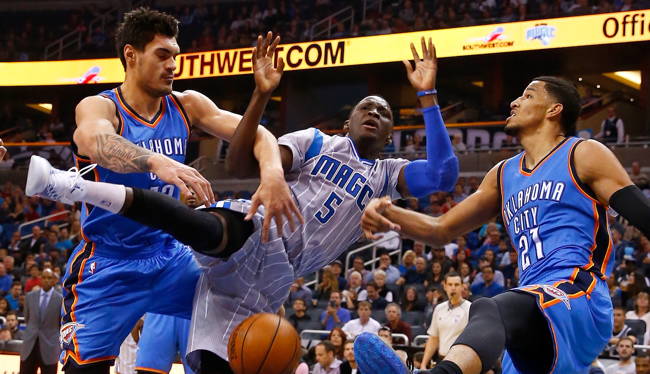
Core: Enes Kanter (24), Victor Oladipo (24), Andre Roberson (24), Steven Adams (23), Alex Abrines (22), Damontas Sabonis (20)
The importance of loyalty and building a legacy obviously contributed to Russell Westbrook foregoing free agency for at least one more year to stay with the Thunder, but so did a young supporting cast that’s as balanced as it is talented.
Kanter might be the game’s foremost moocher, an ox with strong hands, deft touch, and surprisingly nimble footwork around the basket for a player so frequently abused on defense. Oladipo is still a wild card entering his fourth season, but absolutely one worth sacrificing for Ibaka with another talented cost-controlled youngster like Sabonis attached. Roberson played the best basketball of his career at times against the Golden State Warriors in the Western Conference Finals.
Those guys are all impactful already, and have Oklahoma City poised to make the playoffs in its first season without Kevin Durant. It’s Adams, though, who could make Thunder fans forget about losing the former MVP – at least on occasion. He’s one of the most physically imposing players in all of basketball and plays like it on both ends of the floor. What makes the 23-year-old special is that he supplements that natural-born strength with nimble feet, soft hands, and a growing comfort with the ball in space. Sam Presti should lock him up with a max-level extension right now.
Oklahoma City won’t get back to where it was before this summer without a major acquisition. But with Adams and company flanking Westbrook for years to come, it’s not like the Thunder will suffer the same depressing fate as most franchises that have been burned by the sudden defection of a superstar.
*Check back Monday, August 22 for Part II






